| 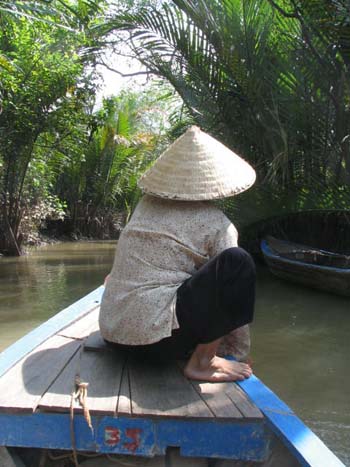
Cultural influences
Colonized and ruled at one point
by China’s Han Dynasty, the Ming Dynasty (briefly), and then
by France, Vietnamese
culture bears the legacy of several foreign occupations —
including, some would say, American. And yet, it has retained a
strong indigenous culture that is uniquely Vietnamese.
I started my exploration in Ho Chi
Minh City (once known in more lyrical terms as Saigon, itself a
name of Chinese etymology). I stayed at the posh Park Hyatt which
is located in District 1 near the Opera House.
The Hyatt is a French colonial style
hotel in a city enclave with a decidedly residential feel. The lobby
boasts original art work; the 259 rooms are outfitted with teak
floors, four-poster beds, dark plantation shutters and marble baths.
During my December visit, uniformed school children sang Christmas
carols in the lobby, poised on the curved wrought iron staircase;
including a rousing version of Jingle Bells. I enjoyed retiring
every night to the living room-like Park Lounge to listen to live
jazz and sip a “Saigon Crush,” a sour cocktail of passion
fruit and vodka.
At the Xuan Spa in the hotel, the
massage therapist climbed up on the table to better knead my back
muscles. During a chat about contemporary Vietnam, I asked her if
she was religious. She tapped her chest and said, “In here
is where church is.” That night, Christmas Eve, throngs filled
the street on their way to nearby Notre Dame Cathedral.
The Tourist's Vietnam
At Square One, the hotel’s
visually and gastronomically stunning East-West restaurant, almost
immediately after ordering, my table quickly filled with sumptuous
dishes: succulent rib eye and luscious Waygu beef, grilled oysters,
pomelo and shrimp salad, spring rolls wrapped in mustard leaves,
cherry crème brûlé — a holiday feast.
Christmas Day began with a steaming bowl of pho, the national bracing
soup, from the copious breakfast buffet.
After breakfast I walked over to
Ben Thanh Market, where Brangelina made a quite stir in November
2006, arriving on a motorbike and buying souvenirs from the vendors.
Here I discovered another sign of a go-go economy: Communist-era
housing blocks were being razed and skyscrapers were going up in
their place. I then walked to the Reunification Palace, whose 1966
interiors are retro in the extreme. The war command room with its
huge maps and communications equipment is the most interesting —
and replete with dramatic irony.
For a street level view of the city,
I discovered that you can’t beat a cyclo, as the
driver peddles furiously through a sea of motorbikes. I saw entire
families sharing a single seat, baby often wedged between Mom and
Dad. Men and women alike were wearing scarves over their faces to
protect them from the pollution and the intense sun. Many of the
women were also wearing opera-length gloves that extended nearly
to their shoulders.
As chance would have it, friends
from Atlanta were staying in the Park Hyatt as well. Although we
were in Southeast Asia, we had dinner at a Mediterranean restaurant
just down the street where the Vietnamese waiter wished us Merry
Christmas and set baklava before us.
Remnants of war
The following morning I joined a
tour of the Cu Chi Tunnels, the extensive and ingenious underground
network of “enemy” or “resistance” (depending
on your historical point of view) tunnels which had been dug into
the earth just an hour and a half from Ho Chi Minh City. Used by
the Vietcong in the 1960s as a means of penetrating the territory
of the “occupying” forces, they were a primitive but
strategic and effective method of waging war against American troops
and and their South Vietnamese allies.
The visit started with a lecture
and then we headed out into the jungle to see the tunnels. Many
visitors to the site crawl through a portion of the tunnel; others
pretend to be soldiers at the firing range. I examined with considerable
curiosity the souvenir bullet lighters and pens, and rubber sandals;
and then I watched a demonstration of rice paper making. Before
arriving in Vietnam, I had wondered if I would find a terrible sadness
in the soil here, but instead I smelled the scent of capitalism.
Vietnam re-emerging
The next day, I left for the Mekong
Delta, a 90-minute drive from Ho Chi Minh City. If you want to really
explore this region, you need a couple of days, otherwise your touring
is limited to ambling down a dirt lane while perusing card tables
laden with snake wine and crocodile wallets and belts, watching
locals make coconut candy, and listening to roosters crow.
The highlight of my brief visit was
the short boat ride through the canals and a snack of fresh cut
jackfruit, papaya, and pineapple dipped in chili and salt. I wished
I had pre-booked a visit to the Cao Dai Temple with its Candyland
colors. For lunch at the Mekong Rest Stop, I sampled the odd-looking
and crispy fried elephant fish and massive fried sticky rice ball
.
Nha Trang, Vietnam’s number
one beach resort area, was the next stop on my itinerary. I split
my time between Ana Mandara and its sister resort, the exclusive
Evason Hideaway.
Ana Mandara was packed with British,
Spanish, German, and American travelers. When it was built, the
hotel was an oasis. But the city of Nha Trang has become a victim
of its own success; the constant bleating of motorbikes grated on
my nerves. The weather was windy and overcast, so instead of lying
on the beach I took a cooking class where I learned to make hand
rolls and spring rolls. Our group of 10 had a blast, laughing and
noshing our way through the lesson, so much so that we decided to
take a half-day tour of the city’s sights together the next
day.
Later, I indulged myself at the hotel's
gorgeous outdoor spa where Hoa, whose tiny size belies her strength,
manipulated my spine with knowing fingers. She then practiced cupping
on me, a technique that uses a heated glass to suction out toxins.
The sun was setting, the waves thundering, and I felt pure bliss.
At home, I never eat much for breakfast,
but the next morning I found the hotel’s buffet too tempting
to miss. In addition to made-to-order pho (the world’s best
soup, I decided) and omelets, there was a beautiful table of fresh
fruit; black spotted dragon fruit with vanilla, watermelon with
ginger, and papaya with basil were heavenly.
Our first stop this day was Po Ngar
Towers, built by the Cham people between the eight and 13th centuries
high on a hill. In quick succession, we visited the White Buddha,
the local market, and a gallery exhibiting the poetic photography
of Long Thanh. For dinner, we ventured out to Lac Canh where we
discovered we were the only non-Asians in a simple, tasty, fun restaurant.
However we very much enjoyed grilling our own fish, calamari, and
chicken on cast-iron braziers set in front of us — and drinking
three-dollar bottles of wine. It was simple, tasty, and great fun.
The Evason Hideaway, where I stayed
next, exemplifies “barefoot luxe.” Located on a rocky
peninsula and accessible only after a 25-minute boat ride, it is
and surrounded by dense vegetation, and has 54 secluded villas,
each with its own private pool. “Island time” is a hour
behind the mainland and thankfully, there are no horns or sounds
of any kind. Every guest is assigned a butler, who shows you to
your room and takes care of tasks such as booking spa treatment
and excursions. I would describe my two-floor villa as “tree
house chic.” Rope pulleys served as door handles, there was
an outdoor shower, and a wooden bathtub. At dinner, I met a couple
from Arkansas who were spending 45 days in Vietnam. “I wish
we were spending 45 days just here,” the wife said wistfully.
Chef David Thai arranged to have
dinner prepared in my villa. He is slight of stature but enormous
of spirit, and refers to himself as a “fusion,” having
trained and lived in Paris for many years. He only recently returned
to Vietnam, excited to be home as the world re-discovers his native
land. As we sat upstairs and sipped wine, his staff cooked on the
patio below and brought us a delicious, multi-course meal. Every
plate was a delicate balance of flavors: beef with green papaya,
prawns with green mango, banana flowers with clams, grilled shrimp,
lime marinated fish, beef filet.
A geographical shift
Mountainous Dalat was a change in
every way from Nha Trang. The city of 200,000 is the country’s
most popular honeymoon destination. It was a popular resort for
French commanders who grew weary of the sweltering tropical weather.
Its hilly pine forests reminded me of the Appalachians or an Alpine
resort. The day was sunny and cool, cool enough that the locals
were wearing hats, coats and gloves. It was also cool enough to
build a fire in my room at Evason Ana Mandara. A former 1920s colonial
estate with just 20 villas atop a hill, the resort had been open
for just a week when I arrived. The smell of roasting coffee from
a nearby plantation wafted across the property. (Vietnam is the
second largest producer of coffee in the world). The room was simple
and spare, but elegant and deliciously quiet.
Thanh served as my guide on a day-long
tour of the city. We took a cable car to Truc Lam Monastery with
its views of strawberry, carrot, cabbage, and broccoli farms passing
below us. The monks practice a unique form of Zen Buddhism here
and the setting — the mountains, the cobalt blue Tuyen Lak
Lake and the gonging bells — enhanced the intimate peaceful
feeling of the place.
I experienced a more amorous feeling
at the Valley of Love and the Lake of Sighs where kitschy local
cowboys posed with newlyweds. The Dalat Railway Station, which was
built in 1932, once had wood-burning steamer. Now the train takes
visitors on excursions to Linh Phuoc Pagoda, a fantasy land glass
and ceramic mosaic temple with a huge Golden Buddha. I met a young
couple from Nashville traveling with their three young children.
They were currently living in Saigon, but spending every free weekend
exploring Dalat. “It reminds us of home,” said the father
and husband.
The so-called Crazy House is a fantastic
structure that seems to owe its inspiration to Gaudi, though the
architect’s father was a former President of Vietnam. The
base of this guesthouse and gallery is a tree trunk; motifs include
a huge cobweb and a giraffe. It must been seen to be believed.
The Lat and Chicken Villages of Langbiang
Mountain are home to a minority people. I stood for a long time
admiring the pastoral scenery and the twin peaks. That night I ate
at the modest Nbat Ly, where the only other non-Asian turned out
to be the resort’s new general manager, an exuberant Aussie.
He invited me to join him for a meal of shrimp with tamarind, mixed
vegetables, and green tea. “It’s my favorite place in
town,” he says.
A communications gap
When I returned to the hotel to
check my email, a young Vietnamese staffer explained that the “Internet
was broken.” Thinking there was a miscommunication because
of the language gap, I waited until the following morning to try
again. No such luck. It was only days later, in Hanoi, that I learned
that a cable in Taiwan had ruptured as a result of a typhoon, and
had knocked out Internet access across Asia.
Classic and
contemporary Vietnam
The ancient town of Hoi An was,
in a bygone era, a vital seaport bustling with Chinese, Japanese,
and European traders, sailors and merchants.
Today it is a UNESCO World Heritage
city with more than 844 historical structures. The sky was angry
and foreboding on the day I toured it. I eventually hailed a cyclo
driver to rescue me from the cold and damp. He produced a tarp,
I popped my umbrella, and off we went splashing through the narrow
streets.
Along the way, we stopped to visit
various unusual and historically significant sites. The Tran Family
Home & Chapel, built by a civil service mandarin in 1802,
is stylishly decorated with Chinese antiques and features an ancestral
altar. The Quan Kong Temple was built in the early 1600s to honor
a Chin Dynasty general; hand lettered New Year’s wishes
hung from slowly burning red incense coils. The grand Fukian Assembly
Hall has an animal theme: fish represent scholarly achievement,
unicorns wisdom, dragons power, turtles longevity; and the phoenix
symbolizes nobility. The Japanese Covered Bridge is the most popular
spot for picture posing.
Avoiding pesky hawkers here wasn’t
easy; the traveler is not likely to escape town without having
an inexpensive shirt or suit quickly made. My favorite memories,
however, are of being dragged into a wedding with friendly and
exuberant celebrants (the bride wore yellow); signing the guest
book while a clutch of children giggled; and being shown around
by a beaming grandpa. I also have a vivid memory of eating two
local specialties at the unassuming Wan Lu restaurant, white rose
and won ton dumplings.
My accommodations
for the next few days — including New Year’s Eve —
was the stunning Nam Hai. Having opened just one month before I
visited, the 100-villa resort has sweeping views of China Beach,
as yet undeveloped. (I suspect in five years that it will have a
very changed vista.) My room was so enveloping I didn’t want
to leave it. Expanses of dark wood, cool stone floors, and a living
and sleeping platform featuring a tub and TV were the ultimate in
simplicity and comfort. At turndown, gauzy white drapes were pulled
together to enclose the bed, and then candles were lit.
In the morning I discovered that
three huge, tiered pools led down to the sea creating the focal
point of the property. Just off the pools were the library, restaurant,
bar, and gift shop. The spa was a knockout, with private mini-villas
floating in a large lotus pond. I began my treatment by choosing
an oil from a generous selection. This was followed by a quick
steam, a foot bath, and finally the relaxing massage.
I joined other guests in the New
Year’s Eve celebration and watched as the Nam Hai staff
released firecracker lanterns into the sky. We all gathered to
toast the New Year and then looked heavenward at a trail of fading
orange that seemed to reach to the moon.
The next day, I hired a private
car and driver to take me over Hai Van (Cloudy Mountain) Pass
to Hue. The imperial city of Hue was the capital of Vietnam from
1802 to 1945, and is another UNESCO World Heritage site. There’s
a certain derelict grandeur to this leafy, pedestrian-friendly
city which is located on the banks of the Perfume River. Foot
and bike traffic is constant on the bridge that spans the two
sides of town. I had a memorable view of it from my room at the
pink colonial Saigon Morin Hotel. The subtle hospitality of the
hotel could be seen in the elevator carpet which changes from
Good Morning to Good Afternoon to Good Evening.
In the evening I joined friends
for a fine dinner at La Résidence, a swanky new Art Deco
hotel that was once the former governor’s residence. Returning
to my hotel I found a printed “nighttime story” left
on my pillow at turndown complete with charming grammatical and
spelling errors.
The
following day I opted for a full day bus tour, at a cost equivalent
to US$7. I spent the morning visiting imperial tombs: the Khai
Dinh tomb, a gaudy mix of Gothic, Baroque and classic Chinese
architecture with intricate glass and ceramic mosaics; the serene
Tu Duc mausoleum on a lake ringed by frangipani trees; a summer
palace featuring Ming Manh’s tomb; and the lovely Thien
Mu Pagoda, constructed in 1601 with 12 large wooden temple guards.
In the afternoon, I visited the
imposing Citadel, marked by its tall flag tower. During the Tet
Offensive in 1968, heavy shelling destroyed a good deal of the
structure, but it is still the most visited site in Hue. Much
like Beijing’s Forbidden City, the walled structure reveals
its temples and moats one by one. To enhance the historical romance
of the experience, travelers can even dress up in imperial costumes
and tour the site by elephant. To end the day, I went for a “long-tail”
boat ride on the Perfume River. For dinner, I joined locals perched
on plastic red stools and crouched over plastic blue tables. In
unison we slurped our beef pho.
Timeless Vietnam
In Hanoi, the wasp-waisted girls
seemed to float down the tree-lined boulevards in their traditional
ao dai past the historic architecture of the colonial
capital. The graceful Métropole Hotel with its white façade,
green shutters, wrought iron flourishes and lush courtyard captures
the Indochine feel of pre-War Hanoi. Since 1901, heads of state,
celebrities, artists, authors, and APEC Summit leaders have stayed
in this landmark hotel. (Request a room in the old wing for period
atmosphere.)
Having strolled over to Hoan Kiem
Lake, the city’s nerve center, I crossed a red wooden bridge
to Ngoc Son Temple.
Here the numerous streets are the
heart and soul of the city as they are in all of Vietnam. I wound
my way through the Old Quarter and its 2000-year history. Its
36 streets are named for craftspeople, such as silversmiths, locksmiths,
silk weavers, and marble carvers. Today it is an maddening maze
of tourists, cycle drivers, cars and motorbikes all competing
for a patch of asphalt. Women both young and old gracefully wove
their way through the masses, swaying elegantly while balancing
a bamboo pole on their shoulders at each end of which were baskets
laden with fruits and vegetables. Many sidewalks have been co-opted
by entrepreneurs who watch parked motorbikes for a few dong.
Vietnam may be one of just four remaining communist countries,
but capitalist principles are clearly the modus operandi.
Back at the hotel late in the afternoon,
I arrived just in time for the chocolate buffet, a lavish spread
of 39 types of desserts including chocolate spring rolls, three
kinds of ganache with basil, olive oil and rosemary (delicious!)
— and a chocolate fountain! Accompanied by charming chef
Didier Corlou, who has made his home in Hanoi for decades, I sipped
the Graham Greene cocktail made with gin, vermouth, and Cassis.
Later I wandered down a nearby
street and into a bookstore where I struck up a conversation with
a U.S. professor who has been teaching in Hanoi for six years.
“I love it,” he says, flipping through an English
language history text. “Tradition and identity still exist
here.”
On another street — let’s
call it the “pirated book street”— vendors were
selling blurry photocopies of bestsellers by authors such as Dan
Brown, Bill Bryson, Paulo Coehlo, and the ever-popular John Grisham
at $4 a piece or three for $10. They were doing a swift business.
I spent a half-day at The Métropole’s
cooking class, which began with a visit to a local market, where
we were schooled in the local produce, fish, and spices of the
region. Our group of 10 were captivated by the displays of produce,
and snapped pictures endlessly while greeting vendors who tried
in vain to press bananas and mangos on us.
Having made our way back to the
hotel for an interactive cooking class, we learned how the dishes
differ in the North and the South. We were then given gifts of
a metal basket for frying fish, a vegetable peeler, and the traditional
conical bamboo hat. Clutching our culinary souvenirs, we repaired
to Spices Garden for a leisurely lunch and a sumptuous array of
constantly-changing “Hanoi street food.”
Back at the hotel, I discovered
that the concierge had arranged for me to spend the afternoon
touring in the hotel’s spiffy navy 1953 Citroen. We drew
curious stares as we traveled through the streets. We drove past
Embassy Row (government buildings are yellow with green shutters)
on the way to the National Fine Arts Museum. The building was
hushed and empty. Entire rooms of the gracious restored colonial
building are devoted to lacquer, woodblocks and folk art, although
the most intriguing piece may be the many-armed 11th-century Goddess
of Mercy.
At the Temple of Literature,Vietnam’s
first university, 82 stone tablets mounted on turtle backs display
the names of scholars. The imposing granite and concrete Ho Chi
Minh Mausoleum (modeled on Lenin’s tomb) was closed during
my visit, but I did get to see the changing of the guard in their
pristine white uniforms.
Of course, no visit to Hanoi would
be complete without seeing the infamous Hoa Lo Prison also known
as the “Hanoi Hilton,” where American soldiers including
Senator John McCain were held in terrible conditions. Two-thirds
of the prison has been demolished to make way for an apartment
and office complex, but the guillotines and other torture devices
still on view gave me a cold shudder.
My final excursion was to Halong
Bay, a three-hour drive from Hanoi. Along the way, we passed farmers
in rice paddies and saw water buffalos pulling plows.
Celebrated by poets for centuries,
Halong means “Bay of the Descending Dragon,” and consists
of more than 1800 limestone outcroppings in the Gulf of Tonkin.
I boarded a wooden junk for a three-hour cruise through the spectacular
scenery (also UNESCO-listed). The islands look like ziggurats
as they come into sight; the misty fog only adds to the harmonious
atmosphere. The captain throttled back the motor so we could enjoy
the scenery and a delicious multi-course lunch of crabs, steamed
shrimp, squid salad, and butter fish to be served.
Vietnam in the 21st century is
many things, and it will surprise you at every turn. Modern Vietnam
is many things, but suspended in time on this winter afternoon,
this was the Vietnam of countless reveries.
As someone who travels frequently
on my own, I am often asked if I feel safe. Many people seem
to believe that the farther away from home, you roam the less
safe you are from crime. That’s not my take.
Check crime statistics for
most any U.S. city and I will wager they are far worse than
many of “far-flung”destinations I have visited.
I have traveled alone in South America, Europe, Africa, and
Asia without incident. Asia, in particular, I find very easy
for a solo woman traveler. Although the continent is the world’s
most populous, it is also statistically very safe.
As an obvious “foreigner”
and a woman alone, you will indeed stand out, but in my experience
it has only been as a figure of curiosity. Otherwise, I have
found that whether its is Singapore, China, India, Thailand,
Indonesia, Burma, Cambodia, Vietnam, Hong Kong, or Nepal,
as a female traveling alone, I have not felt I had to be as
“on guard” as I am in North America.
My advice? Use
your common sense and practice the same precautions you would
in your own hemisphere. And then trust that you are safe in
the world. Because odds are, you are, especially in Asia.
|
Vietnam
on the Verge
by Suzanne Wright 
A sure sign that a country is ready to welcome the
world is when it has attracted top hoteliers to build major properties
in it. In both the North and the South, Vietnam has opened a string
of five-star hotels to host visitors in some of its most popular cities.
According to a January 2007
Gallup International poll, the Vietnamese are the most optimistic
people in the world. Why? A rapidly developing infrastructure, a surge
of foreign investment, political stability, a populace rapidly becoming
fluent in English, diverse cultural attractions, a favorable exchange
rate, unspoiled beaches, and knockout cuisine make for a winning destination.
As a result, poverty is down and income is up.
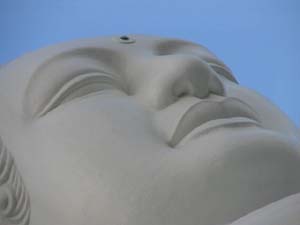

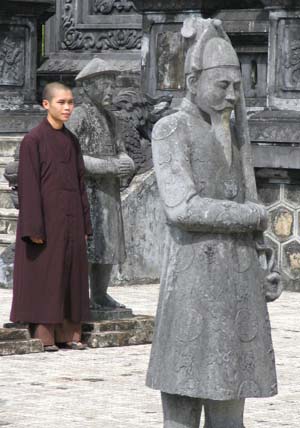
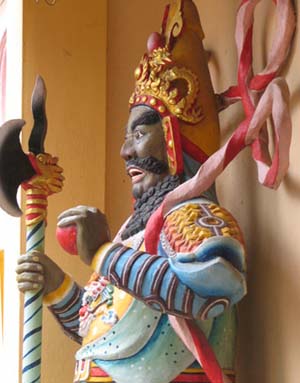


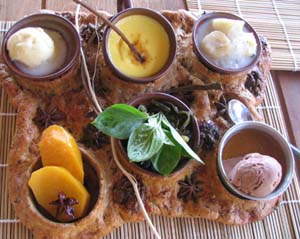
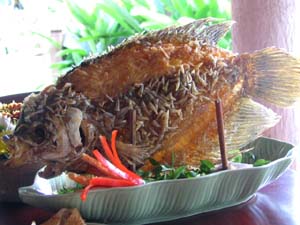
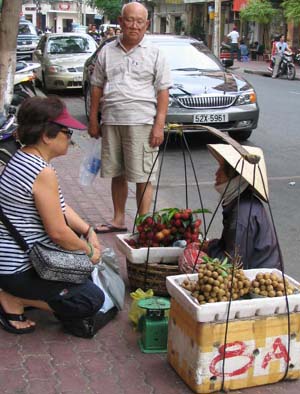
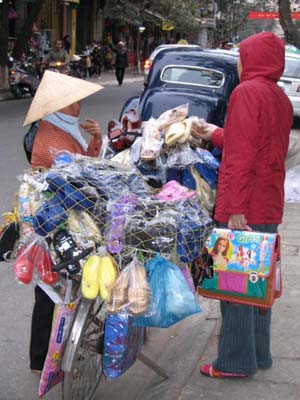
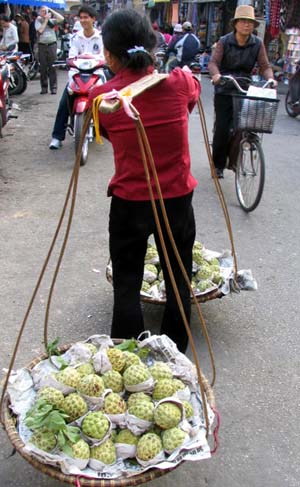
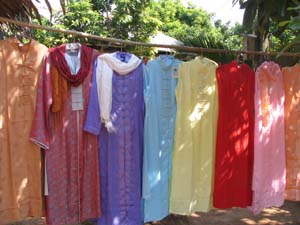
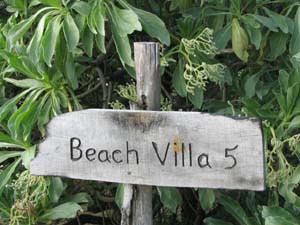



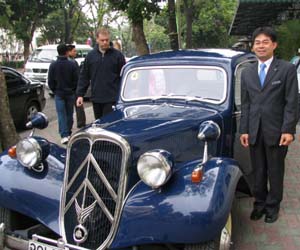
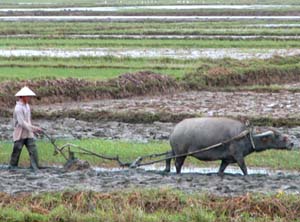
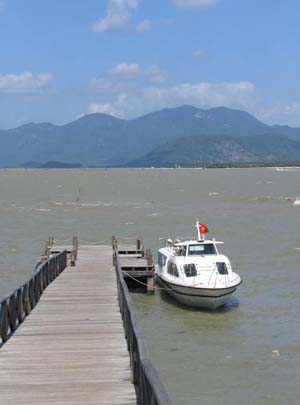
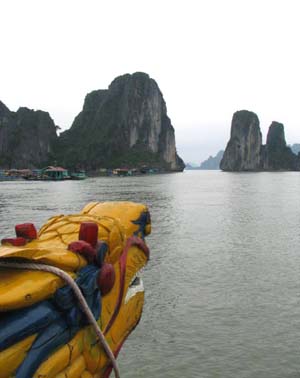
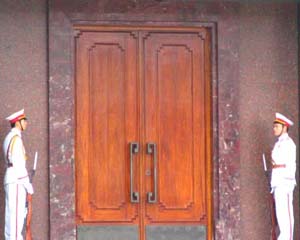
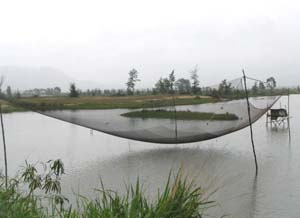
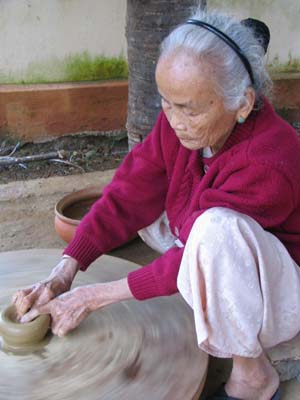


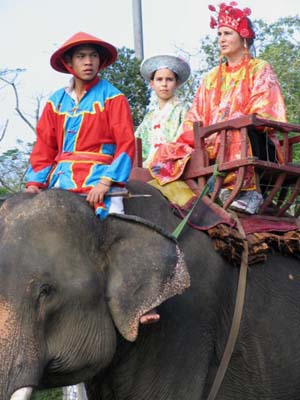
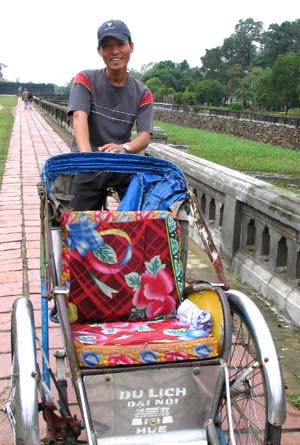
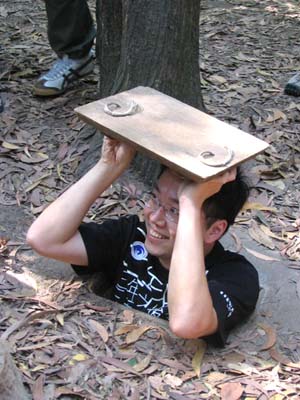
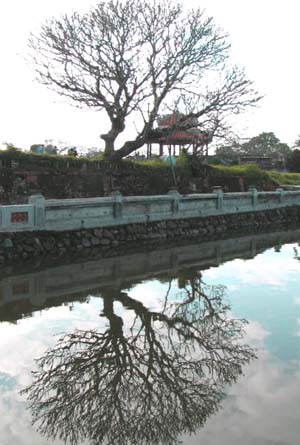
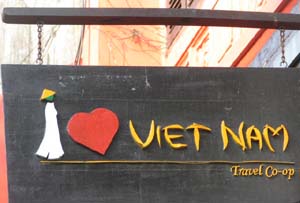

Photographs by Suzanne Wright
|
|